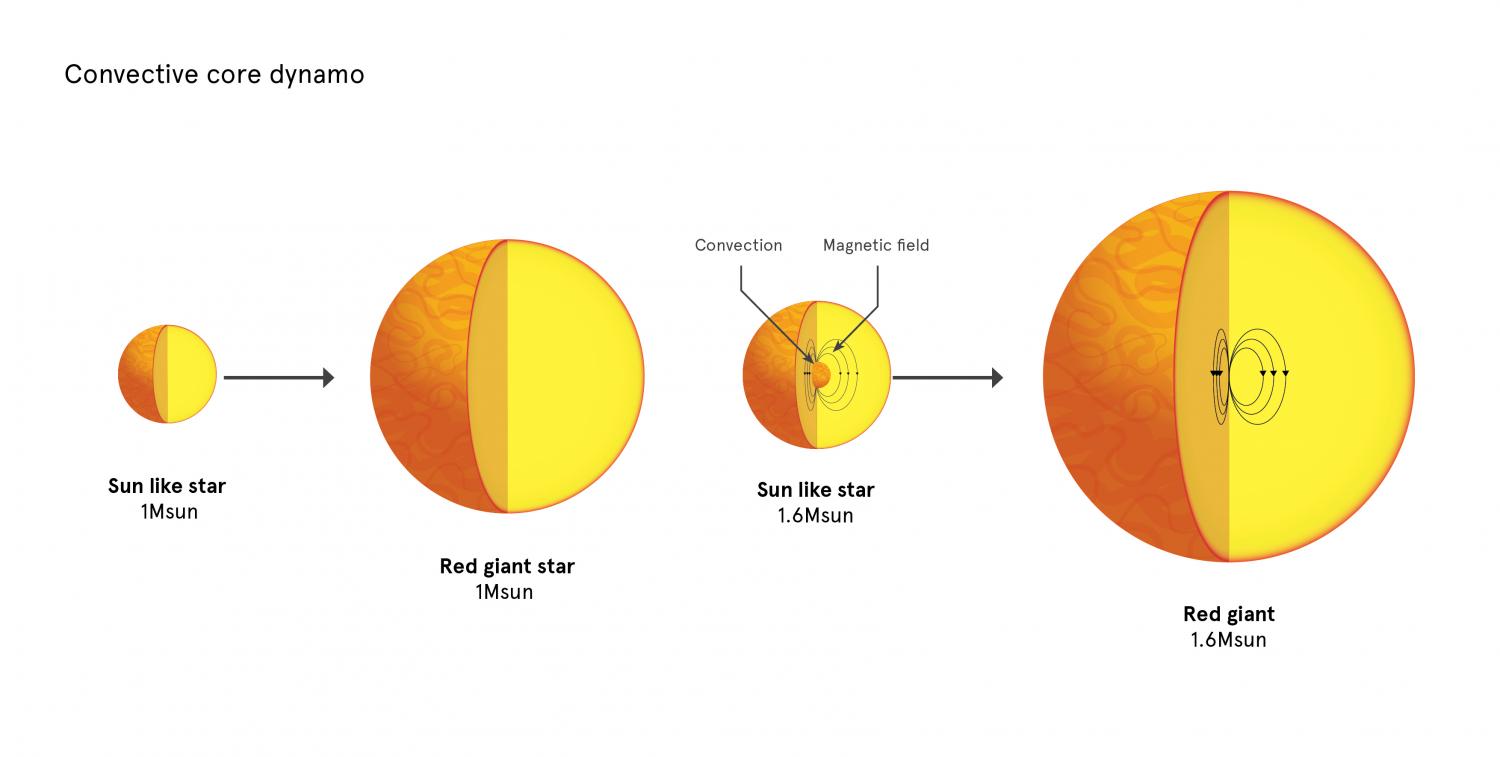Scientists have discovered that strong magnetic fields in stars are not uncommon, but a rule

Australian astronomers from the University of Sydney have discovered that strong magnetic fields in stars are much more common than previously thought. This discovery changes the understanding of the evolution of stars.
“This is a terribly exciting and completely unexpected discovery,” admits the lead author, Professor Dennis Stello. - Previously it was believed that only 5% of stars have strong magnetic fields, therefore, in models of stellar evolution, the presence of a magnetic field is omitted as an insignificant ingredient. These fields were considered insignificant for understanding the evolution of stars. The results of our research show that it’s time to change this idea. ”
Scientists have obtained research results by analyzing data obtained with the Kepler telescope. The work is based on a study of star oscillations conducted at the California University of Technology. The study showed that stellar oscillation, or the propagation of sound waves in different layers of a star, can be a sign of the presence of a strong magnetic field in a star .
It turned out that hundreds of red giants with a mass of 1.5–2 solar, falling into the field of view of the Kepler telescope, have signs that allow us to conclude that they have strong magnetic fields.
Previous technologies for the study of stars made it possible to understand only what is happening in the outer layers of the star. Thanks to the achievements of a relatively new science, astroseismology, studying the internal structure of pulsating stars by studying the frequency spectra of their pulsations, it became possible to look deeper into the stars.
The presence of strong magnetic fields in a star affects the processes occurring in its core, which, in turn, affects how the star develops and ages. Most stars, including the Sun, experience constant internal vibrations due to sound waves propagating within them.
Observation of small changes in brightness allows us to evaluate these sound waves and draw conclusions about the physical properties of specific objects. For example, certain frequencies of these waves are suppressed by magnetic fields present in the stars - according to the results of observations, such an effect was found in 60% of the studied stars.
